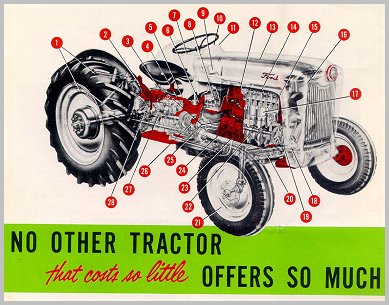Tractor Identification and History
By: John Smith of Old Ford Tractors
Looking For Something?
Old Ford Tractor Model Identification and Changes '39-'64
On this page we have listed the various models of Ford tractors produced between 1939 and 1964. We will show unique features and list serial numbers and other identifying marks. We will attempt to list some, but certainly not all, of the noticeable changes made to each of the models throughout the years. By documenting these changes and features it will hopefully aid in correctly identifying the tractors and be a help to restorers who want their tractors to be "as original".
Model 9N 1939 - 1942
The Ford model 9N tractor was introduced in mid-year 1939 as a joint venture after a handshake agreement between Henry Ford and Harry Ferguson. Commonly known as the Ford - Ferguson tractor, Harry Ferguson designed the 3 point hitch and hydraulic system while Ford's engineers designed and built the tractor and made it all work together. The 9 was for the year, 1939, and N was Ford's designation for tractor. The original price was $585.
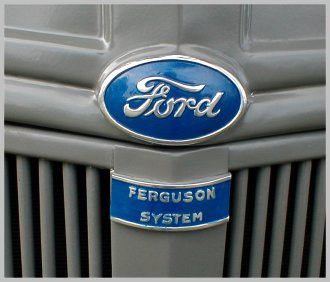
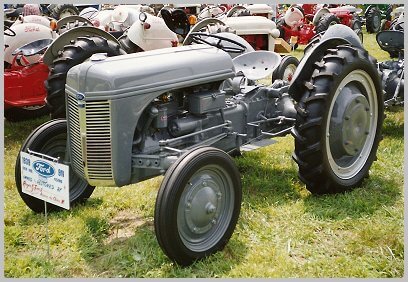
The best way to identify a tractor is by the serial number. Serial numbers on the 9N-2N and 8N tractors are located on the left side of the engine block, just below the head and behind the oil filter.
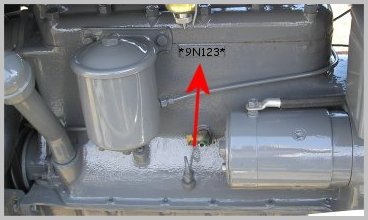
The numbers are usually not stamped very deep (or very straight). Try different angles and light sources to make the number visible. There will always be either a star or a diamond at the beginning and at the end of the serial number. You will only see the diamonds on 8N tractors with a serial number after 8N 433578. All earlier 9N-2N-8N models have the stars. All models made after the 8N will have the diamond markers. The format for the serial number on the 9N-2N-8N tractors is *8N12345*. All serial numbers will begin with either 9N or 8N followed by the number.
There are no 2N serial numbers; all 2N tractors retained the 9N serial numbers. The exception to the 9N or 8N format is the 9NAN and 8NAN prefix which identifies a kerosene burning tractor. These are common in Europe, but extremely rare in the US. There is also the 9NBN prefix for industrial tractors and the BNO25 and BNO40 prefix used on the MotoTug tractors.
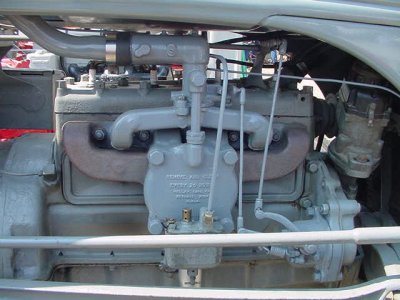
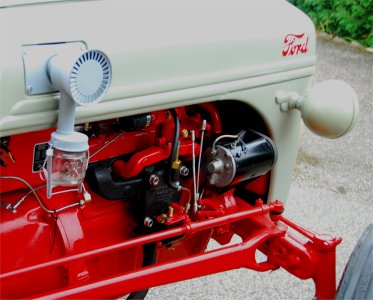
The 9NAN and 8NAN distillate or kerosene burning tractors can be distinguished by the dual fuel tank and the Holley vaporizer setup that replaced the standard manifold and carburetor. The majority of these tractors were exported and survivors are rare in the US.
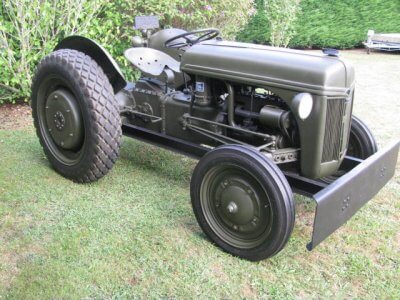
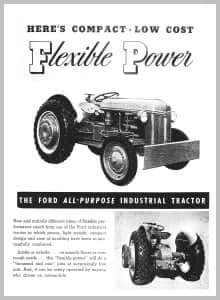
Paul Smith in New Zealand owns this 9NBN industrial tractor that formerly saw military duty. The industrial model tractors had a heavy steel frame and were designed for pulling only. They had no hydraulics. Surviving industrials are also a rare find.
It's also not unheard of to find N tractors with an engine serial number that begins with A253-xx or a similar variant. These were stationary power unit engines or combine engines. Some will have "Ford Industrial Engine" tags attached. Since they were the same as the tractor engine, many have found their way into tractors as replacement engines over the years.
Note that the "font" used on the number stamps was a little unusual. The uppercase letter "I" was used as number "1", and a lower case letter "b" was used a the number "6". That same "b" was turned over to become the number "9". The NAA serial number was the last one to use the model prefix as part of the serial number. After the NAA tractor, the hundred series and up tractors have a model number stamped above a strictly numerical serial number. You will need both of those numbers to identify your tractor.
Some casting codes on 9N-2N-8N engine blocks, transmission housings, and rear axle housings can also help pinpoint a date of manufacture. A code such as G187 would mean the part was cast on or after July 18th, 1947. D252 would be April 25th, 1952. The hydraulic pump housing on the 8N is aluminum and has the actual casting date on it directly in front of the bottom drain plug. However, pumps have been changed over the years, so this date should only be considered to confirm other dating clues. Below are the serial number ranges and some of the features of the tractors in that range.
1939 Serial number 9N1 - 9N10275
The 9N (and later 2N) tractors were painted all gray. Because the steel stamping dies were not ready yet when the tractor started production, the first 600-700 9N tractors had a cast aluminum hood. Although they were painted gray from the factory, the rarity of these aluminum hoods has caused many of their current owners to polish the aluminum to a bright shine and leave it unpainted to show off the rare hood. Who can blame them? The horizontal spoked grille was also cast aluminum as were the complete steering column and dash assembly, shifter base, transmission side covers, engine timing cover, and a few other pieces. The aluminum battery/fuel cover was not hinged but was held in place with spring clips.
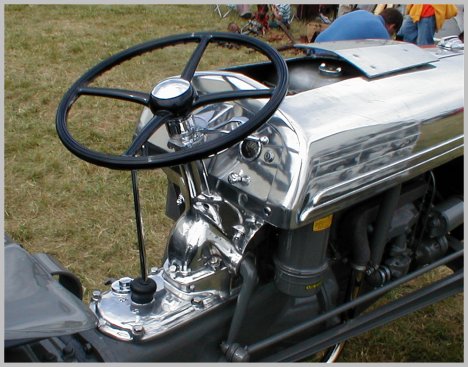
This owner has polished his aluminum steering column and dash and left them unpainted as well as the aluminum hood. Note the snap in battery cover is removed showing the fuel inlet in the center of the tank. Also note the key switch on the right side of the dash and the 4 spoke Ford truck steering wheel. These were all features found only on the early 9N's.
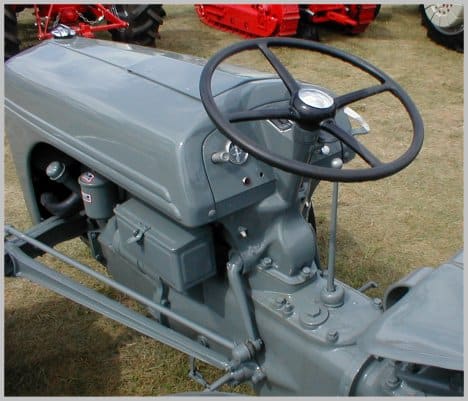
Here's a slightly later '39 9N owned by Sandy Stewart that has the steel hood. The snap in battery cover was changed to steel also. Notice the push button starter on the left side of the dash next to the ammeter. This button was mounted lower on the earliest models. Also note the red ignition "on" light below the ammeter. These were found only on the first 25000 or so tractors. This tractor also has the transmission oil level dipstick in front of the fill plug. The first few thousand tractors had only a plug in the right side of the transmission to check the level. This one also has the patent number plate on the steering column web where there previously was only a casting number on the first several hundred tractors.
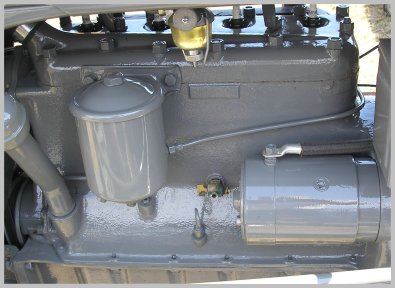

The earliest '39 9Ns can also be distinguished at a glance by looking at the left side of the engine block. If there are no visible freeze plugs (Welch plugs) as in the photo at left, it's a very early block. Note the freeze plug just to the right of the oil filter in the photo on the right. This is a slightly later engine block.
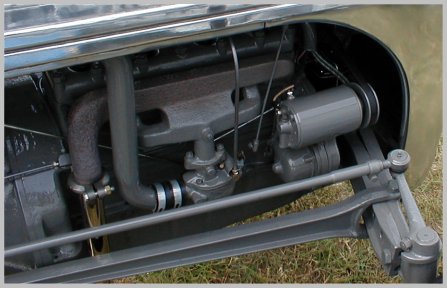
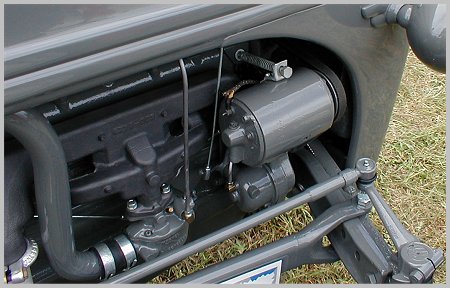
Visual differences on the right side of the engine from the early 9N to the later 9N and 2N tractors include the length of the carburetor mounting throat on the manifold. The early manifolds have a longer drop to the carburetor where the later models had a thicker intake chamber which made this distance appear much shorter. The early 9N (left) up to serial number 9N16953 had a much smaller diameter generator than the later models (right), and the later model used a spring tensioner to keep the belt tight. An oil line was added to the governor for better lubrication on later models. Also note the upper spindle steering arms. The early arms used only a wedge bolt to keep them in place where the later arms ('43) had a Woodruff key and a bolt across the split rear to keep things tight. They worked much better than the early ones.
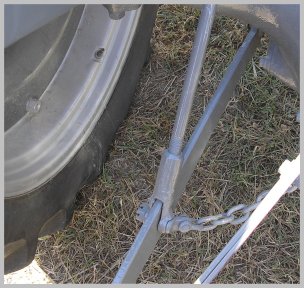
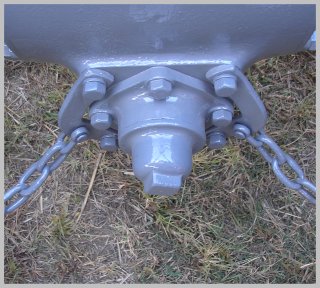
Another feature unique to the early 9N was the adjustable left side lift link The bottom fork was threaded and screwed on to the upper section. The screw-on pto cap cover was made of cast iron. Other early features (not pictured) include grease fittings on the forward side of the front spindles and chrome plating on the shift lever, throttle quadrant lever, choke knob, leveling box crank and other places. Early models also had a larger capacity unpressurized radiator with a chromed cap.
1940 Serial number 9N10276 - 9N46017
Running production changes to the 9N tractor continued their rapid pace in 1940.
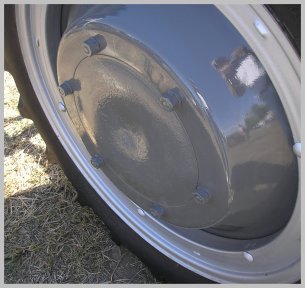

The infamous 9N rear "smooth axle" (left) was replaced by a stronger 2 piece riveted axle hub around serial number 9N41500. The smooth axles are coveted by collectors today. A wider 10x28" rear tire and wheel was offered as an option to replace the standard 8x32" inch rear tires.
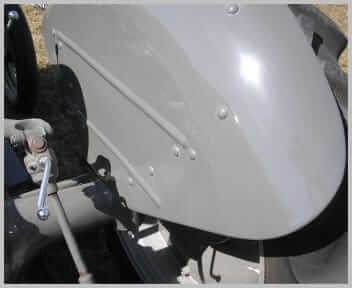

The double ribbed 9N rear fenders (left) went through at least 2 reductions in the number of rivets that held them together before the fenders were replaced by the single rib model (right) that was used on the N tractors for the next dozen years.

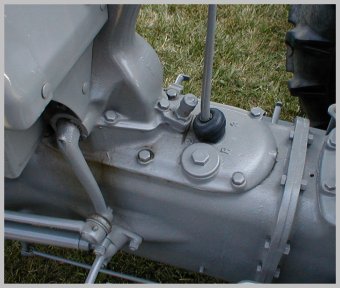
A safety interlock starter button was introduced at serial number 9N12500. The button was moved from the left side of the dash to its new spot just in front of the shift lever. The operator was now required to have the tractor transmission in neutral before the button could be depressed. The aluminum dash panel went through a couple more changes as the starter button was moved with the ignition key ending up on the lower left side and the red indicator light disappearing. At serial number 9N47508 the dipstick was moved from the upper left side of the transmission cover in front of the filler cap to the right rear side cover on the differential housing.
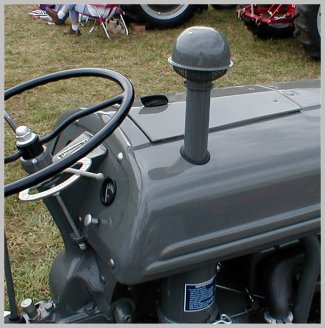

Around serial number 9N15000 the snap-in battery/fuel cover door was replaced by a new door with a hinge on the front end and a winged latch on the rear to keep it closed. It can now be flipped forward for access and stays attached so it won't get lost. Note the through-the-hood type air cleaner inlet extension. These were a dealer installed accessory option available to fit the 9N-2N tractors.
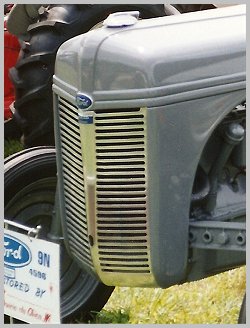
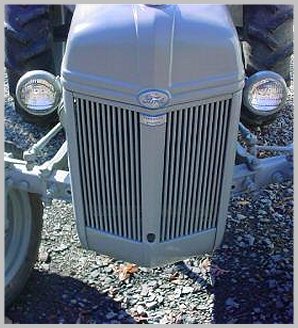
The last big change of the year was at serial number 9N45899 when a new steel grille with vertical bars (right) was introduced to replace the fragile aluminum grill used since '39 (left). Known as "the '41 grille" it was used only about one year and is different from later grilles which have additional slots in the center bar.
1941 Serial number 9N46018 - 9N88933
The tractor was becoming very established and most changes now were minor engineering changes. The grease fittings were moved from the front side of the spindle to the rear side. The brake pedals were redesigned so that the right and left pedals were now different.
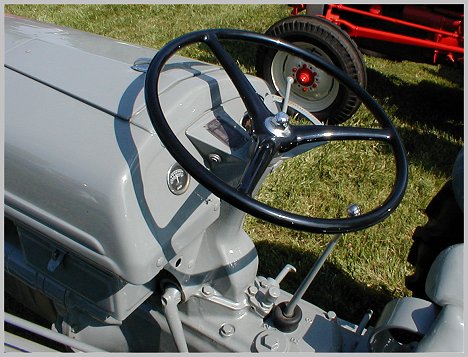
Changes continued to the tractor's dash. It was changed from one piece cast aluminum to one piece cast iron. Then at serial 9N80770 it was changed again to a two piece cast iron column with a steel plate dash panel. The shifter base was also changed to cast iron. The steering wheel changed to a plastic covered 3 spoke design with a chrome nut and washer holding it on. The ignition key moved to the left upper side of the steering column.
1942 Serial number 9N88934 - 9N99046
The country was now at war which affected supplies and production of numerous products, including tractors. A model number change was in the works for the tractor.
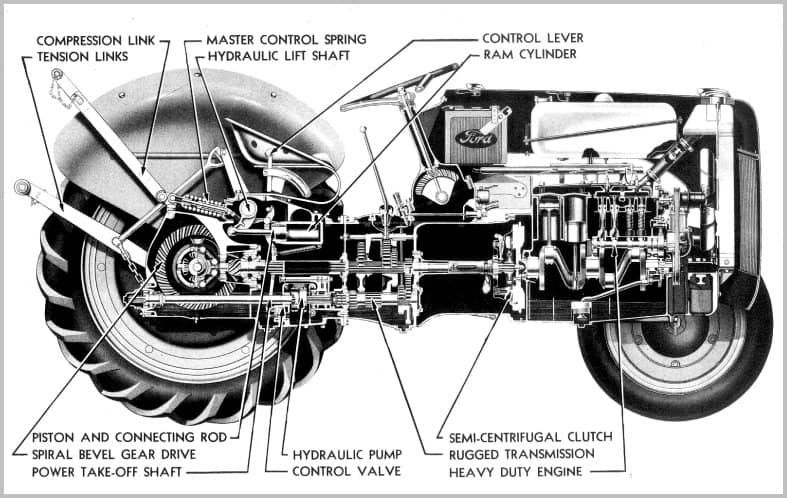
Model 2N 1942 - 1947
Early in 1942 amid wartime material shortages, Ford soon realized if tractors were to be built at all they would have to be built without electrical components and rubber tires. Some believe Ford took advantage of this situation by declaring that the stripped down version of the tractor was actually a new model. Price freezes did not affect new models and the price of the new 2N model ("2" for 1942) tractor could be slightly higher than the previous 9N price. The first 2N tractors were built with steel wheels and magneto ignitions and had to be started with the hand crank because it had no battery or starter. The choke knob was moved up next to the grille in front so the operator could work the choke as he cranked the engine. Little else changed. Most people still refer to these tractors as 9N's.
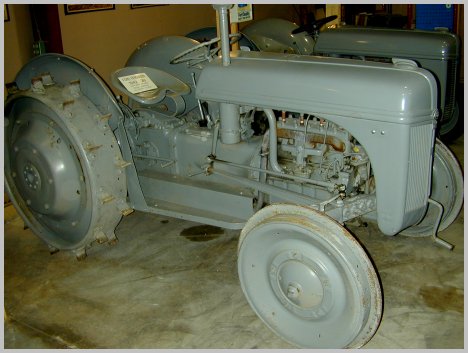

1942 Serial number 9N99047 - 9N105411
It didn't take long for Ford to convince the government that the tractor was as important to the farm back home as the other war products were, and restrictions were relaxed. The 2N tractors again could be built with starters and batteries and rubber tires. All the chrome plating previously found on the 9N tractors disappeared and those items were now painted. The 10x28 rear tires became the standard size. The tool box mounting was changed when the battery tray became steel. The Ford emblem on the front of the hood got a small "2N" stamped into it just below the Ford script.

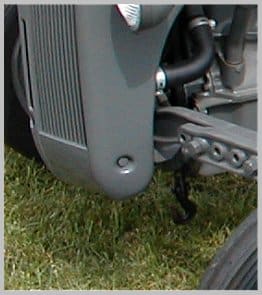
A new front axle/radiator support replaced the earlier cast iron support and the hood side panel (dog leg) was modified to have a mounting bolt accessible from the outside (right).
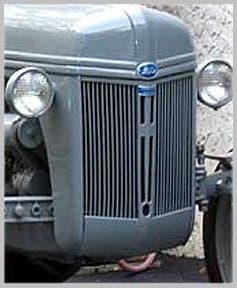

The grille was changed to have four slots in the center bar. This would be the last change to the grille until the introduction of the 8N. The steering wheel was changed to a hard rubber outside with 3 uncovered steel spokes in the center. This basic design was kept and used on all Ford tractors through 1964. The grille was changed to have four slots in the center bar. This would be the last change to the grille until the introduction of the 8N. The steering wheel was changed to a hard rubber outside with 3 uncovered steel spokes in the center. This basic design was kept and used on all Ford tractors through 1964.
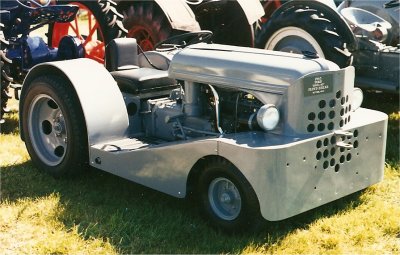
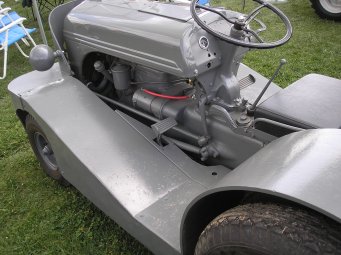
The BNO25 (single rear wheels) and BNO40 (dual rear wheels) MotoTug tractors were designed to be small, powerful "mules" for pulling heavy loads. They were equipped with heavy duty hydraulic brakes. Most of these saw military duty during the war on carriers and on airstrips pulling the planes. Many of the survivors were later stripped of their heavy steel plating and converted for farm use.
1943 Serial number 9N105412 - 9N126574
At serial number 109503 the 9N radiator was replaced with new 2N radiator which was slightly smaller and was pressurized to 4 psi to increase the boiling point of the coolant. The new radiator cap was stamped steel and was painted black. Also at serial number 109503 the front steering arms and spindles were changed to a keyed design.
1944 Serial number 9N126575 - 9N170017
Part way through the '44 production year the front axle radius rods were changed to an oval tube design that was lighter but just as strong as the old I-beam style radius rods. With just small variations in length, this design would be used on Ford tractors for the next 20+ years. The dealer installed lighting kits were changed to include sealed beam Ford headlights, replacing the larger C.M. Hall headlights which had been in use since '39. At serial 167488 the front axle/radiator support was again updated to a stamped steel design that would be used on into the 8N production. A longer oil line was added to route the return oil from the oil filter through the governor for added lubrication.

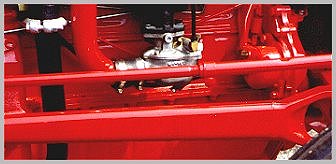
1945 Serial number 9N170018 - 9N198766
1946 Serial number 9N198767 - 9N258539
1947 Serial number 9N258540 - 9N306221
From 1945 through 1947 there were very few changes to the 2N. The tractor was doing well and the engineers were busy designing the new 8N tractor.
Model 8N 1947 - 1952
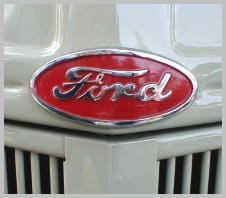
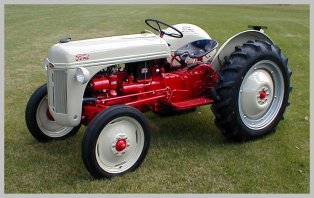
The model 8N tractor was the result of the first major redesign since 1939. It was all Ford designed, since Harry Ferguson had gone his own way and was no longer involved. Production of the 1948 (8N) model began in July 1947. Although it still looked basically the same as the 9N-2N, it had many improvements. The paint colors were changed to a bright red with lighter gray sheet metal, which earned it the nickname "redbelly". The bolt circle of the wheel lug nuts was much smaller than the 9N's and 2N's. Horsepower went up due to an increase in compression ratio from 6.1 to 6.5. The new transmission was a 4 speed with all helical cut gears. Position control, a much needed feature on the 3 point lift, was added to the hydraulic system. A small lever on the right side under the seat switched the system between position and draft control. The brake system was improved and made easier to service by the addition of removable drums. Both brake pedals were now next to each other on the right side. Steering gears were changed to a ball nut and sector shaft type for easier steering and backlash adjustment. Running boards were added. The hood had a screened air intake on the right rear side and the Ford script was embossed into the hood sides. The steering wheel was higher than the 9N-2N models.
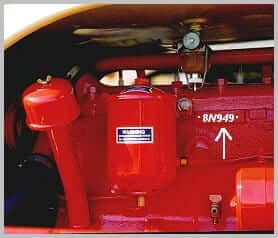
The serial numbers are usually not stamped very deep (or very straight). Try different angles and light sources to make the number visible. There will always be either a star or a diamond at the beginning and at the end of the serial number. You will only see the diamonds on 8N tractors with a serial number after 8N 433578. All earlier 8N models have the stars. All models made after the 8N will have the diamond markers. The format for the serial number on the 8N tractors is *8N12345*. All serial numbers will begin with 8N followed by the number. The exception to this is the 8NAN prefix which identifies a kerosene burning tractor. These are common in Europe, but extremely rare in the US. Note that the "font" used on the number stamps was a little unusual. The uppercase letter "I" was used as number "1", and a lower case letter "b" was used a the number "6". That same "b" was turned over to become the number "9".
Some casting codes on 8N engine blocks, transmission housings, and rear axle housings can also help pinpoint a date of manufacture. A code such as G187 would mean the part was cast on or after July 18th, 1947. D252 would be April 25th, 1952. The hydraulic pump housing on the 8N is aluminum and has the actual casting date on it directly in front of the bottom drain plug. However, pumps have been changed over the years, so this date should only be considered to confirm other dating clues. Below are the serial number ranges and some of the features of the tractors in that range.
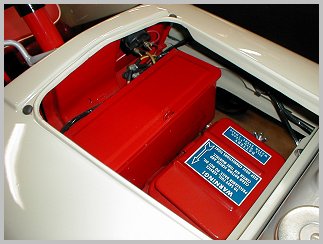
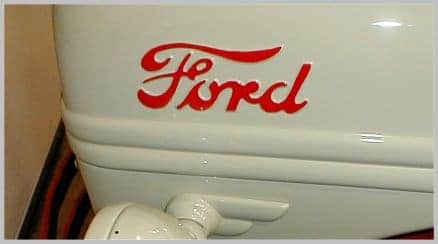
1947 (8N) Serial number 8N1 - 8N37907
8N production started July 7th, 1947. These tractors were sold as '48 models, so it's technically not correct to refer to one as a '47 8N. It should probably be referred to as an 8N built in '47. Early models up to serial number 27940 had a clutch pedal linkage consisting of a bolt on the pedal which pushed on a short lever arm to release the clutch. They were prone to breakage and at 27941 the linkage was updated to the style that continued through the NAA tractors. Some of the earliest tractors still had holes in the grille for the Ferguson System badge that was used on the 2N but they were covered with brass plugs. The radius rod front clevis resembled the 2N type, and the PTO engagement lever mounted on a cast iron cover. The engine block was the same as the 2N block and did not yet have the "8N" cast into it on the left side behind the starter.
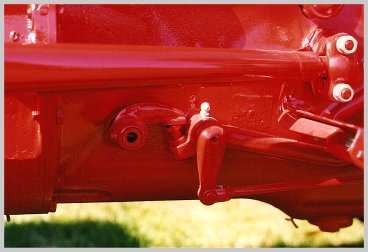
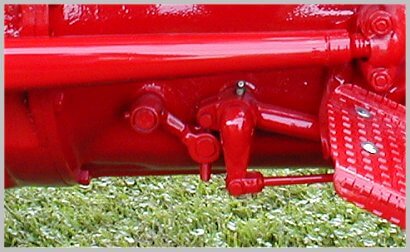
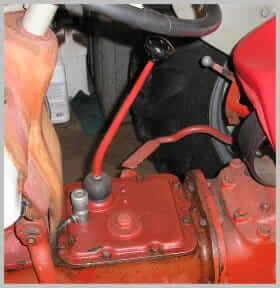
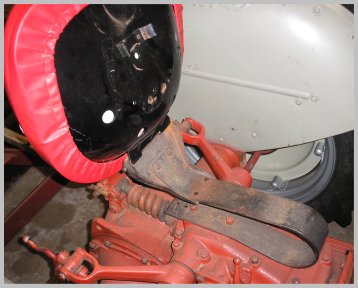
1948 Serial number 8N37908 - 8N141369
At serial number 42161 the engine block casting was changed for better cooling around the valve guides. At the same time the old mushroom valves were replaced with straight stem style valves, one piece guides, shorter valve springs, and heavier valve lifters. The engine block now has the "8N" casting mark on the left side directly to the rear of the starter. The radius rod clevis was redesigned and the 8N3405-C replaced the -A sometime mid year. The camshaft and head were upgraded between serial number 70000 and 85000. At serial 111758 the 4 blade fan became standard and the 6 blade fan became optional. At serial 137685 the generator changed to the larger capacity 8N10000-B generator. Most other changes were minor or internal and not visible.
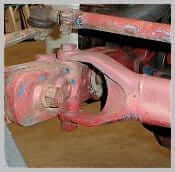
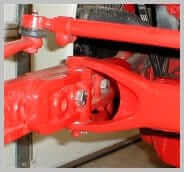
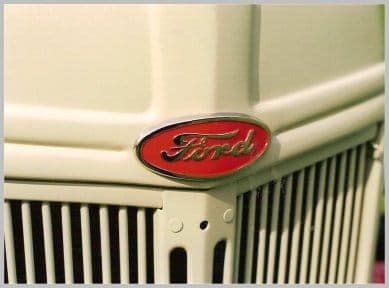
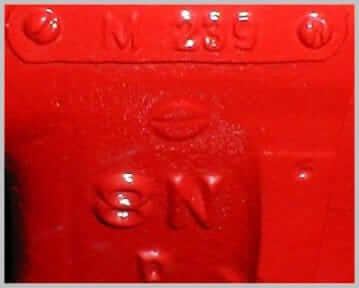
1949 Serial number 8N141370 - 8N245636
There were some notable changes in '49. At serial number 158162 the cylinder head studs were replaced by bolts. At serial 168356 the engine pistons were changed to aluminum with chrome top rings. At serial 179073 the oil filler tube was shortened. At serial 187030 a thrust spring was added to the front of the camshaft and at 197785 the studs in the engine main bearing caps were replaced by bolts. Starting at serial number 215759 the top link rocker was changed from a single hole to a 3 hole design. The steering box was changed at serial number 216989 to a Spicer type with tapered sector shafts for better backlash adjustment. There are set screw adjusters on both sides of the newer style steering box. The dash panel was also changed to fit properly with the new steering box. At serial 237336 the 8N486A "long pin" was eliminated as part of the Ferguson lawsuit. At serial number 245261, nearly the end of '49 production, an inner grease seal was added to the rear axle housing to help stop the common problem of gear lube leaking onto the brakes. New axles were required to accommodate the new seals.
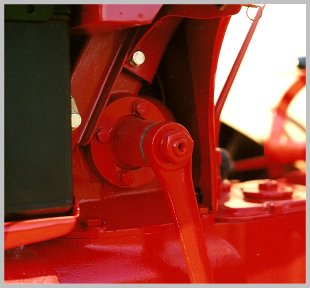

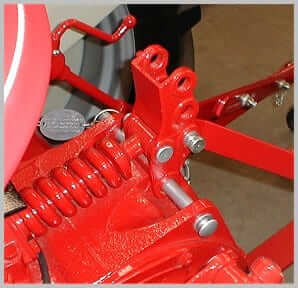
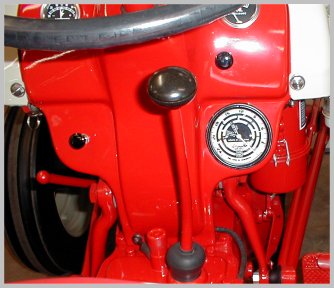
This was a big year for changes to the 8N. At serial number 247571 the engine oil pump was redesigned to use longer gears to provide more volume. At serial number 252845 the one piece shifter handle with the small forged knob was changed to a threaded handle with a black plastic knob that screws on. The TSX-33 carburetor that had been used for several years was changed at serial 260596 to the TSX241 model. A new engine block was cast so the distributor could be relocated at serial number 263844. The engine now had a side mounted distributor with separate coil on the right side and the new 8N10001 generator was mounted on the left side of the engine. The "8N" casting mark on the left rear of the block was changed to "8N-B". The Ford script was embossed into the rear fenders at serial number 273178. Also at 273178 the governor was replaced with one containing a drive for the upcoming Proofmeter. Dealer installed accessory lighting kits eliminated the headlight "wing" mounts and replaced them with round stamped steel mounts. At serial 276115 the carburetor was changed to the TSX-241A. The Proofmeter (tach and hourmeter) was added to the instrument panel at serial number 290271. At serial 305676 the oil filler cap was changed to a larger model with a replaceable filter element inside. At serial number 313112 the carburetor problems were solved by a change to the TSX-241B. At serial 337916 the engine oil filler/breather tube was modified to better keep oil from splashing out.
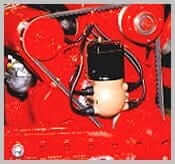
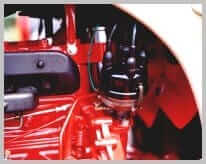
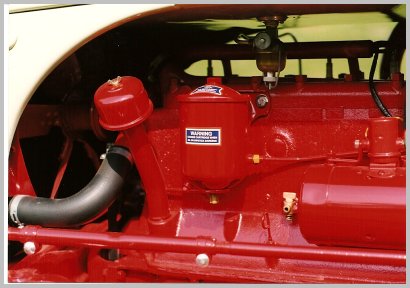
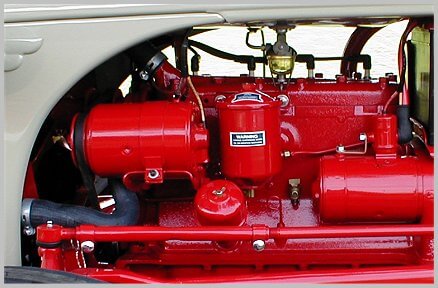
The '47-'50 front distributor engine block (left) and the '50-'52 side distributor block (right). Note how the oil filler tube was moved down and toward the rear of the block to make room for the generator to be mounted on the left side. The oil filter was moved rearward also. Cast pads allowed studs to be installed in the block for the generator mounting bracket.
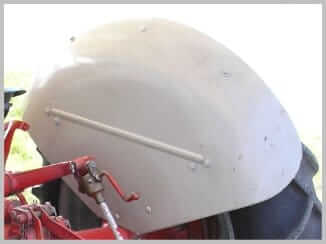
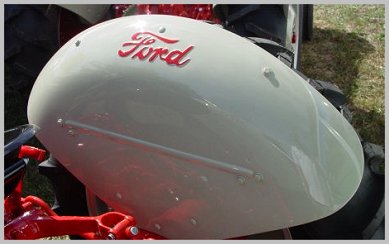
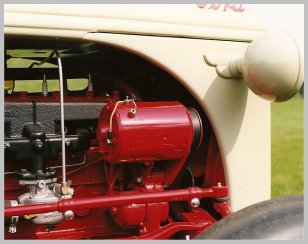

1951 Serial number 8N343593 - 8N442034
At serial number 356950 the engine exhaust valves were to changed to the free rotating type and the valve lifters were changed to the adjustable type. At serial number 403489 a dust shield was added to the inside of the distributor to help extend the life of the contact points. At serial 429792 the tractor hydraulic pump base was changed from aluminum to cast iron. The engine block cylinder bores were enlarged and the sleeves were changed at serial number 433578 to a cast iron material with a .090" wall thickness (piston size remained the same). The "8N-B" casting mark on the left rear of the block was then changed to "8N-C" and the star on each end of the serial number was changed to a diamond. Because Ford stopped supplying the steel sleeves, many older engines were rebored at overhaul time to use the new cast iron sleeves. The engine oil pan casting was beefed up to give it extra support to resist cracking from the strain of front loaders.
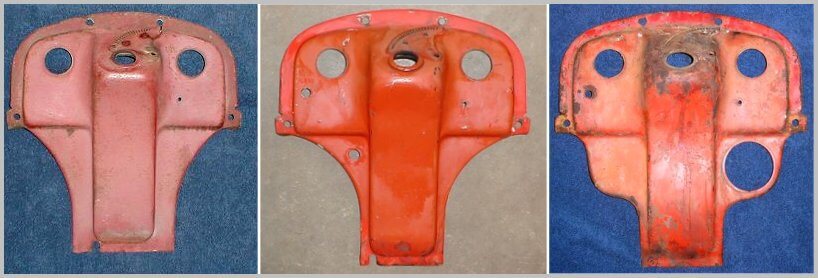
The three 8N dash panels used during production. From serial number 1 to 216988 (left), newer steering box dash from serial 216989 to 290270 (center), and the Proofmeter dash used from serial 290271 to the end of the 8N production.
1952 Serial number 8N442035 - 8N524076
At serial number 451959 the front tie rod ends were changed to have a longer stud and use a castle nut and cotter pin to keep them from working loose. The spindle arms were also changed to bend upward slightly to make clearance for the castle nut above the axle. At serial 452913 the lube hole for the steering box was put on the front of the upper column between the steering wheel and dash board. Sometime in late '52 a change was made to the transmission housing on the left rear side that would allow for a larger reverse idler gear to lower the reverse gear ratio. This change was already in production in the new NAA-Jubilee model. (Note - we have found no proof that the larger NAA type reverse idler gears were ever installed in any of the modified 8N housings). The upper rear lift arms were beefed up with a more rectangular cross section shape for increased strength, another change that was already in effect on the new Jubilee.
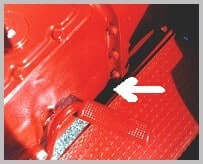

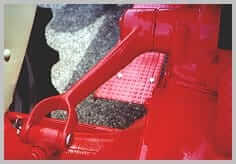
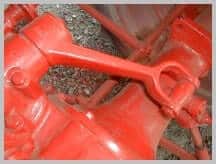
The Jubilee-NAA 1952 -1954
In late '52 Ford introduced the all new, completely redesigned NAA series tractor for '53 which marked the end of 8N production and started a new chapter in Ford tractor history. 1953 was Ford's 50th anniversary, so the new tractor was called the Golden Jubilee in celebration of that event. The NAA - Jubilee had a more powerful 134 cubic inch overhead valve engine, live hydraulics, and redesigned front sheet metal with the "cyclops" medallion in the center of the hood. It is slightly taller, longer, and heavier than the 8N.
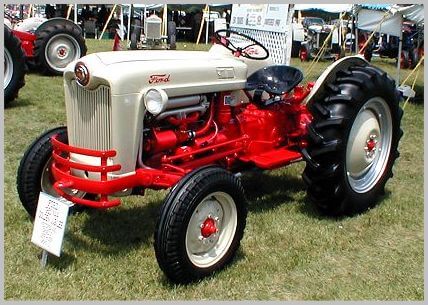
The serial numbers on the first 22,238 NAA models were stamped on the left front
of the engine block just below the head as shown in the photo below.
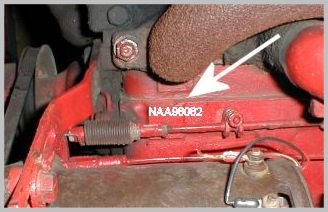
Serial number location on later NAA models was on the left side of the transmission case
just below the flat above the starter bulge as shown in the photo below.
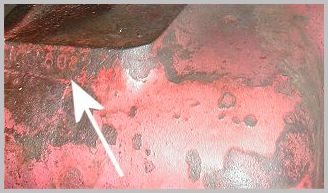
Serial numbers on all NAA models start and end with a diamond symbol. Because of the two locations for the serial number and the common practice of owners buying rebuilt engines on an exchange basis , it's possible to have an early NAA with a later engine that will have no serial number at all. It's also possible to have a later NAA with an early engine and the tractor will have 2 serial numbers. Another curiosity with NAA serial numbers that is unique to the NAA model is that preceeding zeroes were used on the the low numbers so all have 5 digits (6 on the last ones built). The lowest verified serial number we've heard of is NAA00034 - three zeroes and 34, the 34th production NAA.
1952 Serial number NAA 00001 - NAA 04929
1953 Serial number NAA 04930 - NAA 77474
1954 Serial number NAA 77475 - NAA 128965
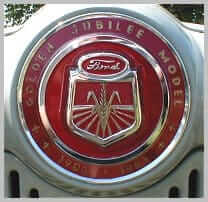
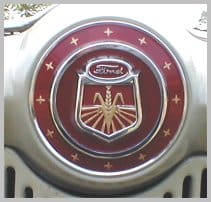
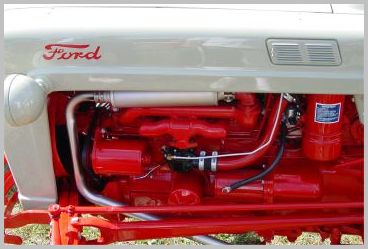
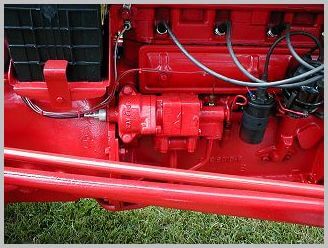
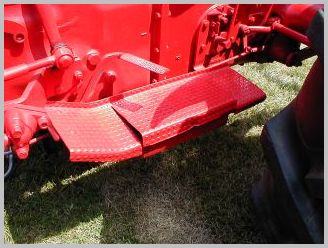
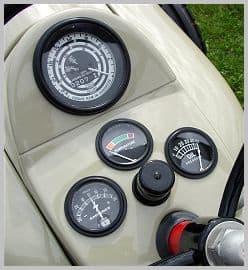
The Hundred series 1954 - 1957
Model 600-700-800-900
In late '54 Ford introduced the new expanded line up of the hundred series tractors for '55. First came the 600 and 800 models followed by the 700 and 900 models. The 600 series was basically the 134 cubic inch NAA with a few updates. The hydraulic lift was improved and the rear axles were redesigned as one piece to eliminate the separate axle and hub used on the 8N and NAA. The 800 series had a 172 cubic inch engine which provided a lot more power. It's hood was raised 2 inches to allow for a larger gas tank and the rear differential and housing was larger and stronger than the one on the 600 series. The 700 series was the row crop tricycle version of the 600 series and the 900 series was the row crop tricycle version of the 800. A wide front end option was available for the row crop tractors. Two transmission options were available, a standard 4 speed and a 5 speed that could be had with or without the two stage clutch live pto option. The model number identifies the tractor options within each series. For example, a model 640 tractor is a 600 series with a 4 speed transmission (non-live pto), hydraulics and a pto.



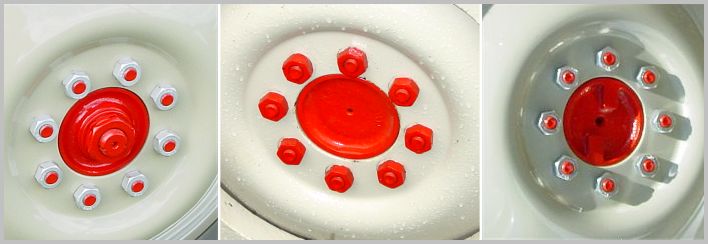
The 8N-NAA rear axle hub (left photo) was attached with a large nut in the center.
The '55 and newer tractors had one piece axles and did not have that nut.
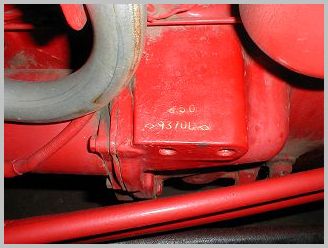
The Hundred series and newer tractor serial number location is on the flat area above and
behind the starter. The first number is the 3, 4, or 5 digit model number, depending on the series. Below that is the serial number.
A diamond symbol denotes the beginning and end of the serial number. This photo shows a
model 850 (800 series) with serial 93706 (1956). Use the chart below to decode your model
number, then find your serial number in the appropriate series to determine the tractor year.
Decoding the 3 digit model numbers on Hundred series tractors -
First number
6** - Four wheel utility type with adjustable front axle, 134 ci gas or LP-gas engine
7** - High clearance row crop with134 ci gas or LP-gas engine
8** - Four wheel utility type with adjustable front axle, 172 ci gas or LP-gas engine
9** - High clearance row crop type, 172 ci gas or LP-gas engine
Second number
*2* - Four speed transmission, no PTO or 3 point lift
*3* - Four speed transmission, no PTO
*4* - Four speed transmission with PTO and 3 point lift
*5* - Five speed transmission with 3 point lift and non-live PTO
*6* - Five speed transmission with 3 point lift and live PTO
Third number
**0 - Hundred series, '55 - '57
1954 Serial number 1 - 10614
1955 Serial number 10615 - 77270
1956 Serial number 77271 - 116367
1957 Serial number 116368 - up
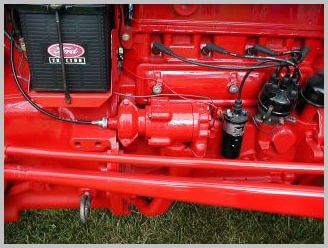
The vane type hydraulic pump was replaced by a piston type pump in 1955
at serial number 66849. This pump was used through 1964 and has been
retrofitted to many NAA tractors today.
The "01" series 1957 - 1962
501-601-701-801-901 Series Tractors
In late '57 Ford introduced another expanded line up for '58 renamed the "01" series. These included the 501 (offset) 601, 701, 801, and 901 series tractors. Several improvements were made and new options such as power steering appeared. Horsepower increased across the line and the color schemes were changed. The 134 cubic inch gas or 144 cubic inch diesel engined 501,601, and 701 series became known as the Workmaster tractors and had an all red hood with gray only on the grille, fenders and wheels. They retained the earlier NAA-600 style grille. The 172 cubic inch gas or diesel engined 801 and 901 were known as the Powermaster tractors. Their paint scheme included a red hood center with gray sides and new "egg crate" style grille. All got a new medallion for the front of the hood and new styled rear fenders.
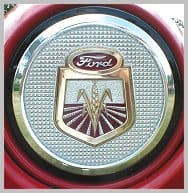
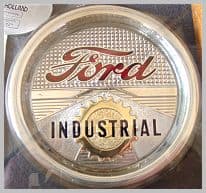
The "01" series hood emblem was the first one to be made of plastic


Model and serial numbers for the "01" series tractors are located in the same place as the hundred series tractors.
Decoding the 3 digit model numbers on "01" series tractors -
First number
<font color="red">5** - One row offset tractor with134 ci gas, LP-gas or 144 ci diesel engine
6** - Four wheel utility type with adjustable front axle, 134 ci gas, LP-gas or 144 ci diesel engine
7** - High clearance row crop with134 ci gas, LP-gas or 144 ci diesel engine
8** - Four wheel utility type with adjustable front axle, 172 ci gas, LP-gas or 172 ci diesel engine
9** - High clearance row crop type, 172 ci gas, LP-gas or 172 ci diesel engine
Second number
*1* - Select-O-Speed transmission, no PTO
*2* - Four speed transmission, no PTO or 3 point lift
*3* - Four speed transmission, no PTO
*4* - Four speed transmission with PTO and 3 point lift
*5* - Five speed transmission with 3 point lift and non-live PTO
*6* - Five speed transmission with 3 point lift and live PTO
*7* - Select-O-Speed transmission with single speed PTO and 3 point lift
*8* - Select-O-Speed transmission with dual and ground speed PTO and 3 point lift
Third number
**1 - "01" series '57 - '62
Suffixes
-1 - Tricycle with single front wheel
-4 - High clearance with wide front
-5 - Factory wide front end
-S - Sherman transmission
-L - LP gas engine
-D - Diesel engine

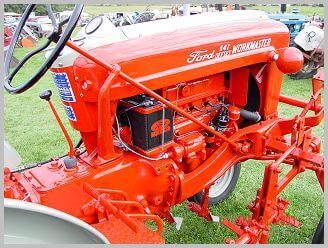
"01" Series tractor serial numbers -
1957 Serial number 1001 - 11996
1958 Serial number 11997 - 58311
1959 Serial number 58312 - 105942
1959 was the year for the introduction of Ford's revolutionary new Select-O-Speed transmission. The Select-O-Speed gives you a wide range of ratios with 10 speeds forward and 2 reverse all done with the use of hydraulic clutch packs, bands and planetary gears. It allows shifting up or down on the fly with no clutch. Ford Tractor launched one of their biggest advertising campaigns ever to pump up sales of the new Select-O-Speeds and required every Ford Tractor dealer to have at least one Select-O-Speed demonstrator tractor (painted gold) on hand as a sales tool. Unfortunately, the release of the Select-O-Speed occurred before all the bugs were worked out of the transmission and it soon developed a bad reputation as being troublesome and unreliable. Ford backed the transmissions 100% under warranty and within a year or so had the bugs worked out and the Select-O-Speed evolved into an excellent transmission. However, bad reputations are hard to turn around and the Selecto-O-Speed has kept it's stigma to this day, partially because they are expensive to repair and very few people know how to work on them. The surviving Gold Demonstrator tractors are very collectible today.
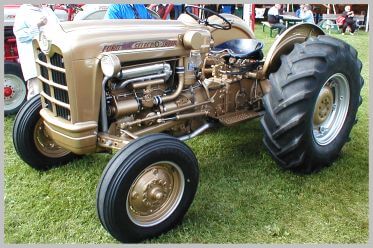
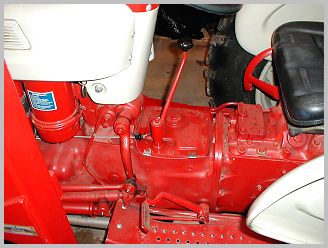
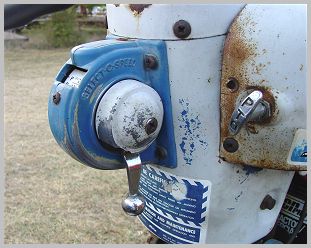
1960 Serial number 105943 - 131426
Near the end of 1960 Ford introduced the first of the Thousand series tractors as Industrial models. These tractors were painted red and "buff" and were basically modified "01" series models with a different seat, industrial tread rear tires, and a heavier fixed width front axle. The light industrial models were the 2030 and 4030 with the 4040 being the heavy industrial. It was basically the same as the earlier 1801 industrial tractors.
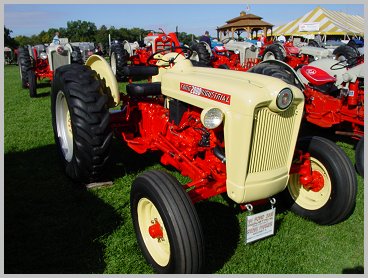
1961 Serial number 131427 - 155530
1962 Serial number 155531 - up
The Thousand series 1962 - 1964
2000-4000-6000 Series Tractors
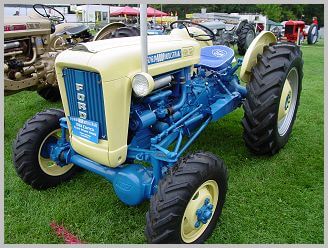
In 1962 Ford introduced the first Thousand series utility tractors, the 2000, 4000, and 6000. The 2000 and 4000 series tractors were basically the same as the 601 and 801 series tractors but with a slightly restyled grille that ended 10 years of the "cyclops" front emblem. The 6000 series was an all new and much larger 6 Select-O-Speed cylinder tractor. The thousand series tractors were painted the new Ford corporate blue color with a lighter gray trim and the familiar red and gray was gone except for a few red and "buff" industrial models.


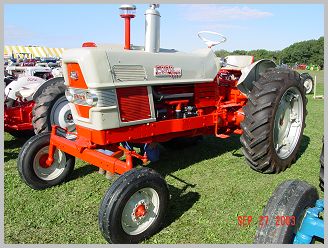
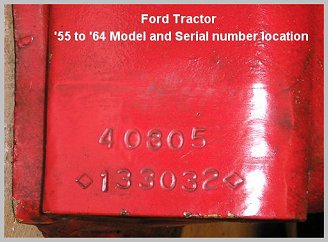
Decoding the 5 digit model numbers on 2000-4000 series tractors -
First number (1 digit)
2**** - 134 ci gasoline or 144 ci diesel engine
4**** - 172 ci gas, LP-gas or 172 ci diesel engine
Second number (1 digit)
*0*** - Industrial models produced prior to 1963
*1*** - Industrial and agricultural models produced after 1963
Third number (2 digits)
**10 * - Row crop
**11 * - Offset
**20 * - Utility-type w/adjustable front axle
**21 * - Orchard type w/ non-adjustable front axle
**30 * - Utility-type tractor w/non-adjustable front axle (light industrial)
**31 * - Low center of gravity (LCG tractor)
**40 * - Heavy duty industrial tractor w/sub frame
**41 * - Heavy duty industrial tractor w/sub frame & cast grille
Last number (1 digit)
*1**0 - Four-speed w/o PTO
*0**1 - Four-speed w/o PTO or hydraulics
*1**1 - Four-speed w/PTO
*0**2 - Four-speed w/hydraulics, w/o PTO
*1**2 - Five-speed w/live PTO
*0**3 - Four-speed w/hydraulics and PTO
*0**4 - Select-O-Speed w/o hydraulics or PTO
*1**4 - Select-O-Speed w/o PTO
*0**5 - Select-O-Speed w/hydraulics and single-speed (540 rpm) PTO
*0**6 - Select-O-Speed w/hydraulics, 540 and 1000 rpm PTO and ground-speed PTO
*1**6 - Select-O-Speed w/two-speed (540 and 1000 rpm) independent PTO
*1**7 - Select-O-Speed w/540 and 1000 rpm independent PTO and ground-speed PTO
*0**9 - Five-speed w/live PTO
Suffixes
-1 - Tricycle with single front wheel
-4 - High clearance with wide front
-L - LP gas engine
-D - Diesel engine
Thousand Series tractor serial numbers -
1962 Serial number 1001 - 11947
1963 Serial number 11948 - 38930
1964 Serial number 38931 - up
Part number identifiers cast into 134 and 172 engine blocks (lower right side)
EAE 6015 - 134 1953-1957
EAF 6015 - 172 1953-1957
310905 - 134 1958-1959
310609 - 172 1958-1959
B9NN-6015C - 134 late 1959 early 1960
B9NN-6015A - 144D late 1959 early 1960
B9NN6015J - 172 late 1959 early 1960
B9NN6015B - 172D late 1959 early 1960
C0NN-6015G - 134 sleeveless late 1962-1964
C0NN-6015H - 144D late 1960-1964
C0NN-6015C - 172D-G late 1960-1964
C0NN-6015J - 172 late 1960-196



If your tractor looks something like this one, it is a 1965 or newer
3 cylinder model and is beyond the scope of this webpage.
Information on these tractors is available HERE
Scroll To:
Thanks to John Smith of Old Ford Tractor for allowing us to use this information.


